
(Image credit: Future / Mike Lowe)
The established norms are hard to beat when it comes to the best Android phones. I've loved testing out the Samsung Galaxy S25 Ultra and Google Pixel 10 Pro XL this year, both of which prove that point.
But I've been using the Oppo Find X9 Pro as my own handset for over a month for this very review – and, I've got to say, it's rocked the apple cart in so many ways; sensationally shaking up the status quo.
No other phone available right now has this kind of battery capacity and, having shot extensively with the Find X9 Pro's new camera arrangement – including with an insane Hasselblad Teleconverter option – its zoom capabilities overshadow the Samsung and Google establishment.
Sure, the Find X9 Pro's price position puts it up against those key competitors, but that's showing assured confidence. It's an earned right, too, even if Oppo is still re-establishing itself as a key brand – but this new flagship is one surefire way to do just that.
Price & Availability
The Oppo Find X9 Pro is available right now, although you won't be able to buy it Stateside.
In the UK, however, it's a square £1099 at launch in the (one and only*) 16GB RAM and 512GB storage configuration. That's €1299 in Europe and AU$2299.00 in Australia.
Oppo's official site offers the best deal, including trade-in offers that can further reduce the price, so long as you're buying it outright.
*There are 12GB RAM configurations in some territories, while a 16GB+1TB model is the only version to add satellite connectivity
Find X8 Pro vs X9 Pro: What's New?
- Latest MediaTek Dimensity 9500 processor (up from 9400)
- 16GB RAM as standard (up from 12GB minimum)
- New 6.78-inch display ups brightness, reduces bezels
- Upgraded 3D Ultrasonic fingerprint scanner is faster
- 7500mAh battery capacity (up from 5910mAh)
- 80W wired charging, skips Qi2 though
- New side-position camera island, not circular enclosure
- Drops from quad main cameras to a trio
- Ups 3x periscope zoom to 200MP resolution
- Adds 'True Color Camera' as fourth lens – for white balance and colour accuracy
- Latest ColorOS 16 software at launch
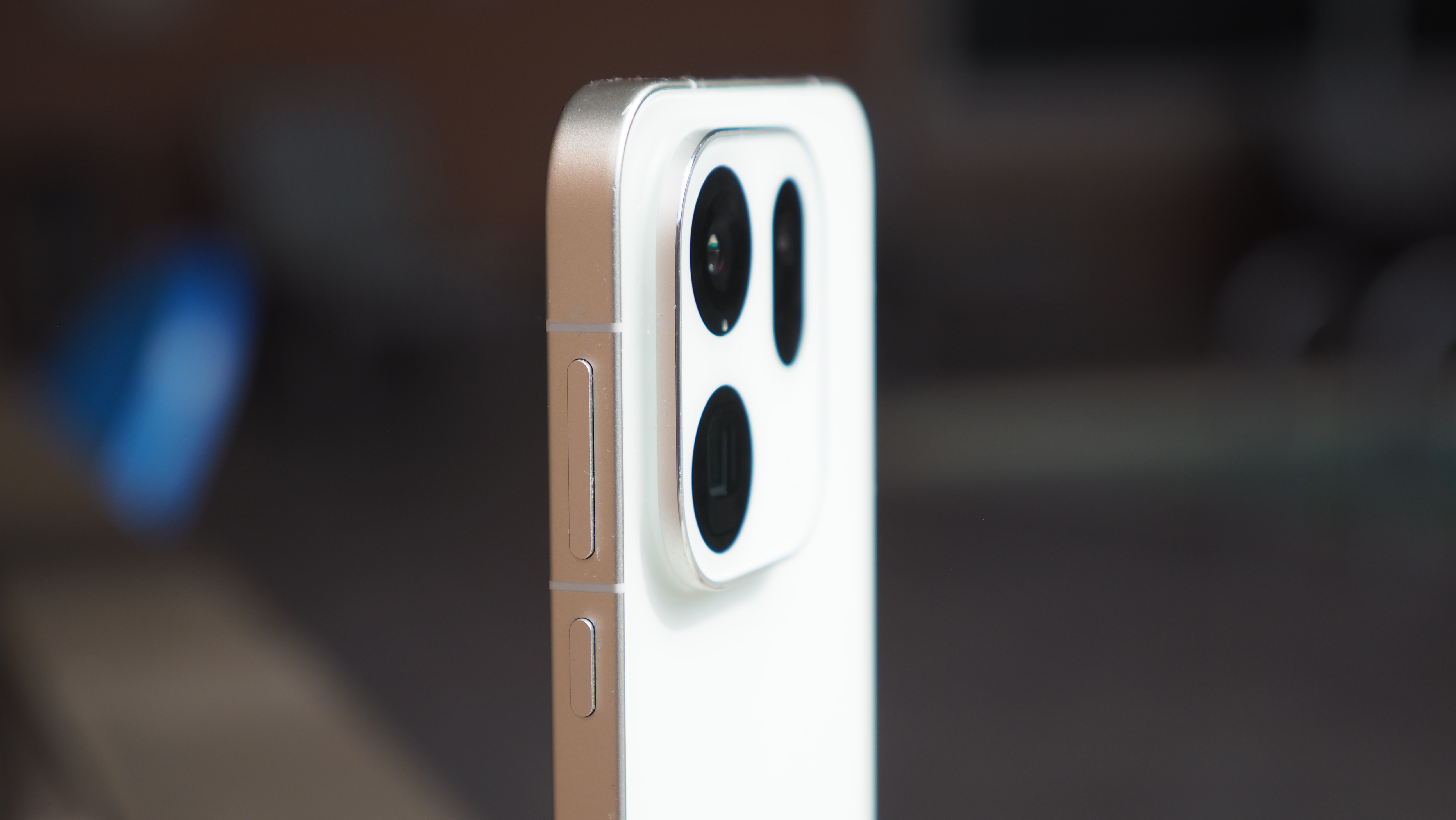
(Image credit: Future / Mike Lowe)
Not everyone is going to be looking at the Find X9 Pro as a replacement for the Find X8 Pro – the latter being Oppo's 2024 reintroduction back into wider markets, including across the European region – but it's the most obvious comparison to show off the brand's progression.
From a design perspective it's most notable – with the large, circular camera arrangement of old now put to bed, replaced by a neater, offset island that I much prefer. It also avoids that annoying 'desk wobble' when laid on a flat surface.
Oppo has furnished the X9 Pro with the latest internals, too, utilising MediaTek's flagship Dimensity 9500 processor – a 3nm processor that rivals Qualcomm's Snapdragon 8 Elite Gen 5 equivalent.
That's powered with a third-generation silicon-carbon battery technology, packing in a 7500mAh capacity – which, for context, is 50% more than Samsung's S25 Ultra flagship. The Oppo charges faster, too, with 80W wired available (if you have the plug to serve it).
Above all, though, it's really the cameras that take the biggest leap forward. Gone are the Find X8 Pro's quad cameras, reduced to a trio of main snappers (the fourth is a low-resolution sensor for colour accuracy) – but in a much more powerful setup. There's a 3x periscope zoom optical lens with a large sensor and 200-megapixel resolution, most notably.
Nips and tucks elsewhere see an improved display with less prominent bezel, an upgraded fingerprint scanner that's more reliable, the latest connectivity standards, and Oppo's up-to-date ColorOS 16 operating system. It's a strong all-round package.
Design & Display
- 6.78-inch OLED display with 1.15mm bezel on all sides
- 1272 x 2772 resolution (450ppi density)
- 1-120Hz LTPO variable refresh rate
- 3600 nits peak brightness
- Dolby Vision and HDR10+
- 2160Hz PWM dimming
- Measures: 8.25mm thin; Weight: 224g
- Silk White, Titanium Charcoal

(Image credit: Future / Mike Lowe)
I'll get it out the way up front: the one thing I don't love about the Find X9 Pro is my review device's Silk White finish, as pictured. I'd much rather have the greyish tint of Titanium Charcoal version (which isn't actually titanium; all X9 Pro's frames are aluminium) – although both finishes have a soft-to-touch feel that keeps fingerprints at bay.
While there's been a lot of talk about slim phones making their presence – the Samsung Galaxy S24 Edge and Apple iPhone Air being the two notable releases of 2025 – the Find X9 Pro is happy in its thicker skin; at 8.25mm it's slimmer than Google's flagship and barely different to Samsung's S25 Ultra offering.
In display terms, Oppo has opted for a 19.5:9 aspect ratio – an echo of Samsung – which, in this 6.78-inch form, is spot-on for one-handed use. Other slightly larger flagship handsets can feel more bothersome to use; the balance here is just right.
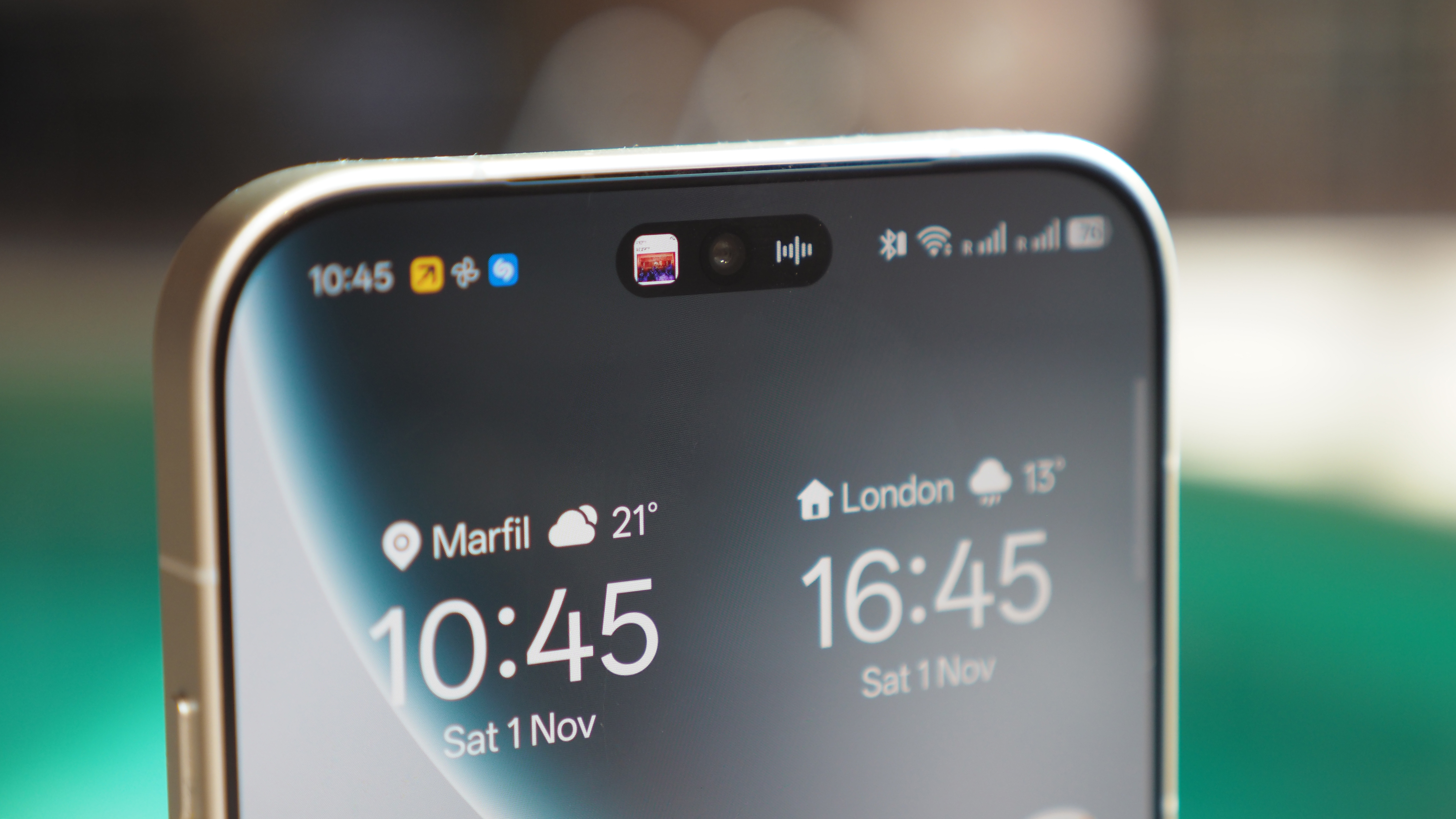
(Image credit: Future / Mike Lowe)
The display is a real delight, too, with minimal bezel outsmarting Google's design language, lots of brightness available for when it's needed, and a wide-ranging colour palette that looks natural and doesn't push visual pop to excess.
It's a little reflective, though, and isn't immune to scratches despite the use of Gorilla Glass – those being my two shortcomings to highlight in this area. A screen protector is fitted as standard, I removed it and it didn't take long for me to regret that decision!
The display is an LPTO type, meaning it can adjust its refresh rate as required. Anything from 1-120Hz is possible, so smoothness is a given whatever you're doing. It's not only refresh that's so variable, either, with Oppo supporting brightness levels all the way down to 1 nit – for the rare occasions when required in super-dark envirnonments.

(Image credit: Future / Mike Lowe)
Other points of design note are the presence of the Snap Key (upper left when facing the display), used by default for Oppo's AI Mind Space capture – an artificial intelligence feature that captures what's on the display, and can store and contextualise the information presented.
The opposite side houses an up/down volume rocker and power key beneath, much like many other Android handsets. There is also the Quick Button which, like on majority of Apple's latest iPhone models, can launch the camera and be used to control the zoom.
I think that Quick Button is poorly placed, though, and therefore impractical. It's never felt natural for me to use when shooting landscape as, just like with the iPhone models, it's too far up the body's frame. The only reason I've really used it is for the purpose of this review, establishing that it's not for me.
Performance & Battery
- MediaTek Dimensity 9500 processor (3nm process)
- 1x 4.21GHz; 3x 3.5GHz; 4x 2.7GHz; Arm G1-Ultra GPU
- 16GB RAM as standard (for UK release)
- 512GB storage (1TB available in some territories)
- 7500mAh silicon-carbon battery
- 80W wired charging
- 50W wireless

(Image credit: Future / Mike Lowe)
One feature that's a clear knockout in the Find X9 Pro is its battery performance. There's no other phone available with a cell capacity as large as this. At 7500mAh, it's 50% greater than what you'll find in a Samsung Galaxy S25 Ultra. Now that's saying something.
It's an achievement deliverable thanks to a third-generation silicon-carbon battery type, which is more dense than a lithium-ion equivalent, as found in most competitors. That doesn't mean it's slow at charging or less reliable – indeed, Oppo's software features gauged charging to elongate the battery's lifespan over years of use.
Side note: you will need to acquire your own plug to achieve the maximum 80W 'SuperVOOC' charging speeds. You'll want to ensure the plug can deliver to this level (or higher), too, as the larger capacity cell inevitably means longer charging times – it's about 80 minutes from zero to full, which ironically is slower than Samsung's S25 Ultra (which offers a maximum and far slower 45W charging speed).

(Image credit: Future / Mike Lowe)
Anyway, what does this battery mean in the real world? At first I wasn't fully convinced about its delivery, but having bedded in and used the Find X9 Pro for over four weeks now, I've got to the point where I'm not even charging it every single night. It's that good.
Context is everything, of course, so here's my streaming test summary: when watching Netflix, I managed to achieve 20 hours of playback in one go. Given I'm not usually awake that long in any given day, I'd say that's great innings. Go offline and you could likely achieve even greater results.
For day-to-day use, however, it's variable. But nothing I've done has put the Find X9 Pro out of action in a single day. Some of my 'worst' tests have involved hours of Bluetooth streaming, 6 hours of screen time, heaps of test shooting with the cameras, plus multiple gaming sessions – including Pikmin Bloom's considerable in-background settings – and still arriving above the 20% mark. Typically I'd have 40% remaining on a given workday – but with lighter use you could get two days from a single charge.
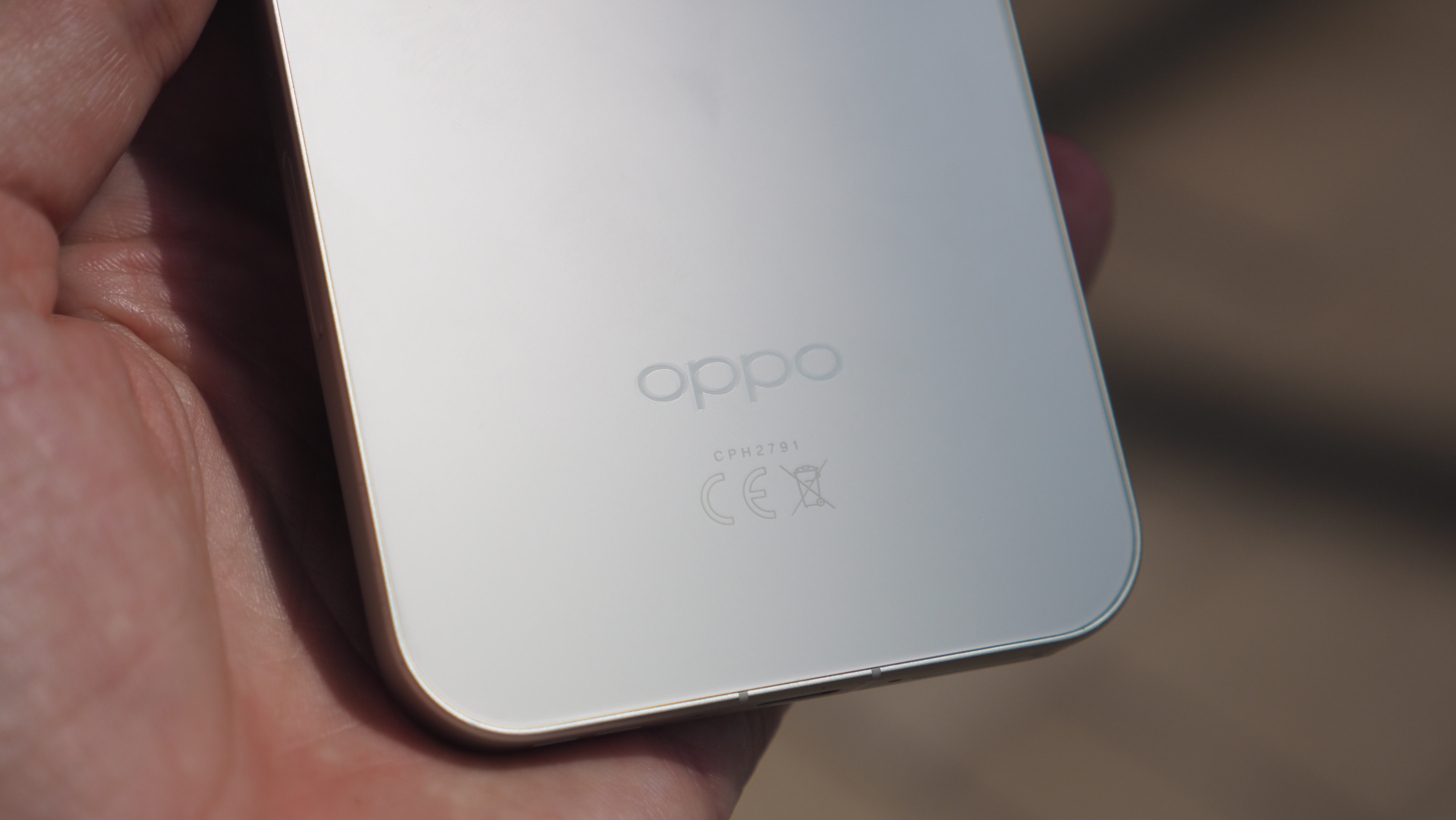
(Image credit: Future / Mike Lowe)
Performance from the Find X9 Pro is typically every bit as 'pro' as the product's name suggests. PUBG: Battlegrounds players will have no qualms, for example, with smooth frame-rates and the in-built vapour chamber ensuring the device is kept nice and cool.
That said, it's not 100% perfect all of the time. I'm unsure if this is teething issues between MediaTek's latest and Oppo's ColorOS software, but my go-to game, South Park: Phone Destroyer, visibly doesn't present smooth motion throughout – irrelevant of what the screen's output and Game Mode are telling me. So there's some minor disconnects somewhere.
Other than that, though, this is a flagship handset with flagship power as you'd expect in 2025. That means having dozens of apps open is no problem, switching between them is a breeze, offering a great all-round experience without notable overheating. There's ample power here for AI-based tasks, too, which are an increasing norm.
Software
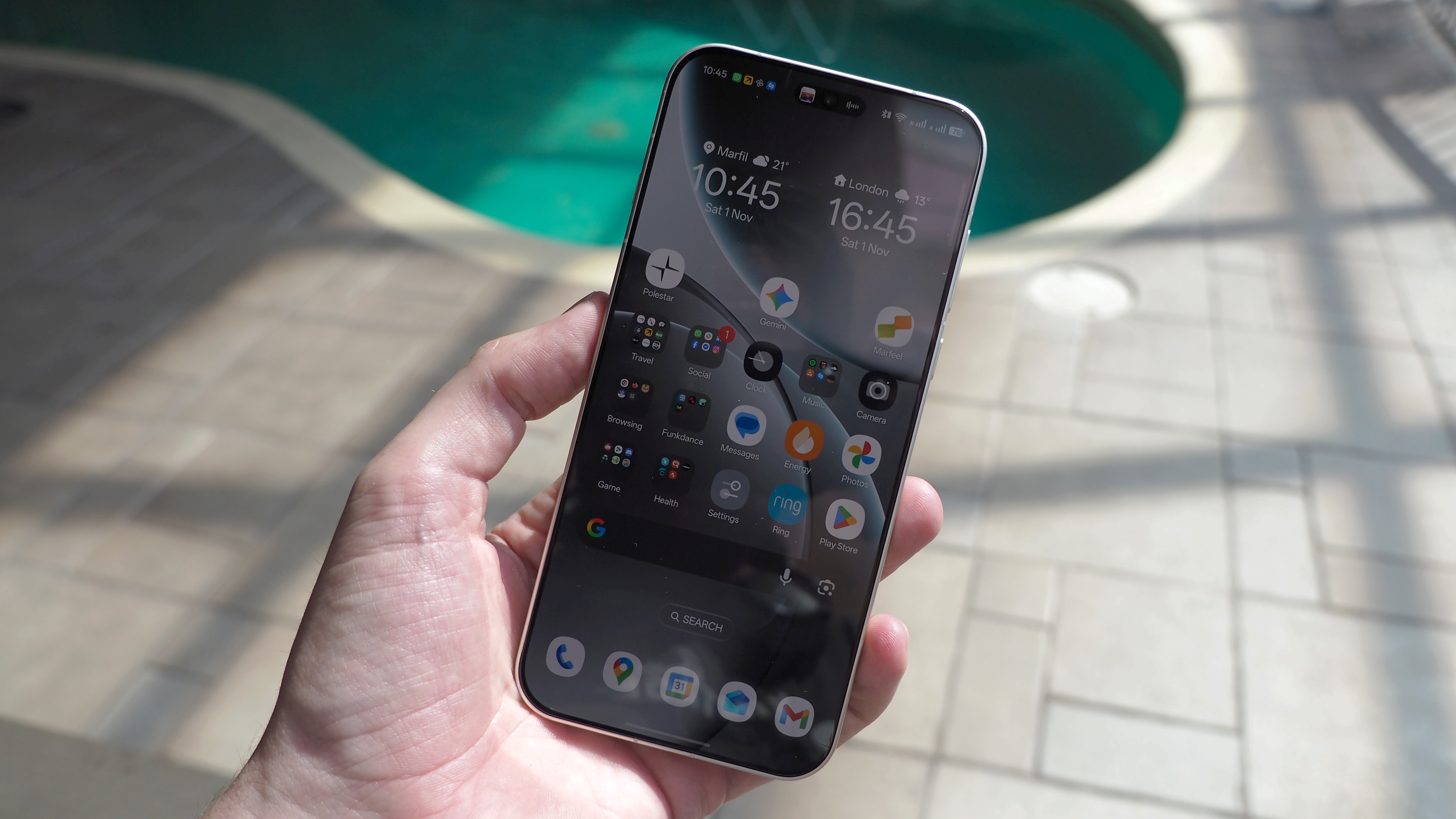
(Image credit: Future / Mike Lowe)
Some of those AI options are only moderately useful at this stage, though, such as the Snap Key's access to Oppo's AI Mind Space feature. I've used it a little, as it can be handy for adding context – "what is this?" to something you've photographed or screengrabbed, for example – but sometimes it can get stumped.
As a place for collecting visuals and voice notes – much like Nothing's Essential Space – it will only continue to grow. I've found it handy when travelling and screengrabbing a flight itinerary, for example, which is then prompted to be added to my calendar automatically.
Oppo's ColorOS 16 software also runs very smoothly and, in most regards, echoes Google's Android 16. You can personalise the home screen, add animations, and adjust the scale and design of icons, and so forth, making for a good-looking device.

(Image credit: Future / Mike Lowe)
That said, the minor details in this software need more finessing. Case in point: it flips between keyboards seemingly at will – by default due to security, for certain app sign-ins – so I've had issues with Gboard moving to secure keyboard, then kicking me back to Microsoft Swiftkey without asking. Settings adjustments and uninstalling the latter fixed this issue for me – but it shouldn't be an issue in the first place.
Also, for such an "AI forward" device, I can't help but see a lack of joined-up thinking in some areas. After taking a photo and sharing on WhatsApp, for example, it won't default to my most recent contacts. Sometimes it won't even suggest my most-used apps, forcing an elongated process to select and share. This really needs refining.
There are some great features, though, such as pop-up miniature floating apps, which I can see being useful when multi-tasking, but really wish this could be controlled on a per-app basis, or entirely switched off for those who don't want it. As it stands, it can't be.
Even greater customisation would take ColorOS up a level, ultimately, but it's a good base with some nifty features. I'm pleased it avoids a mass of pre-installed apps and ads, like some competitors force upon you, making for a solid alternative offering overall.
Cameras
- Triple rear cameras (with fourth colour accuracy addition):
- Main (23mm): 50-megapixel, f/1.5 aperture, 1/1.28in size (Sony LYT-828), autofocus (PDAF), optical stabilisation (OIS)
- Tele (70mm; periscope zoom): 200MP, f/2.1, 1/1.56in (Samsung S5KHP5), PDAF, OIS
- Wide (14mm): 50MP, f/2.0, 1/2.76in (Samsung 5KJN5), PDAF
- True Color Camera (21mm): 2MP, f/2.4, 9-channel colour
- Single front selfie camera:
- 21mm (at widest): 50MP, f/2.0, 1/2.76in (Samsung 5KJN5), PDAF
- Hasselblad Teleconverter Kit available:
- 3.28x mag can deliver 230mm (and 460mm / 920mm)
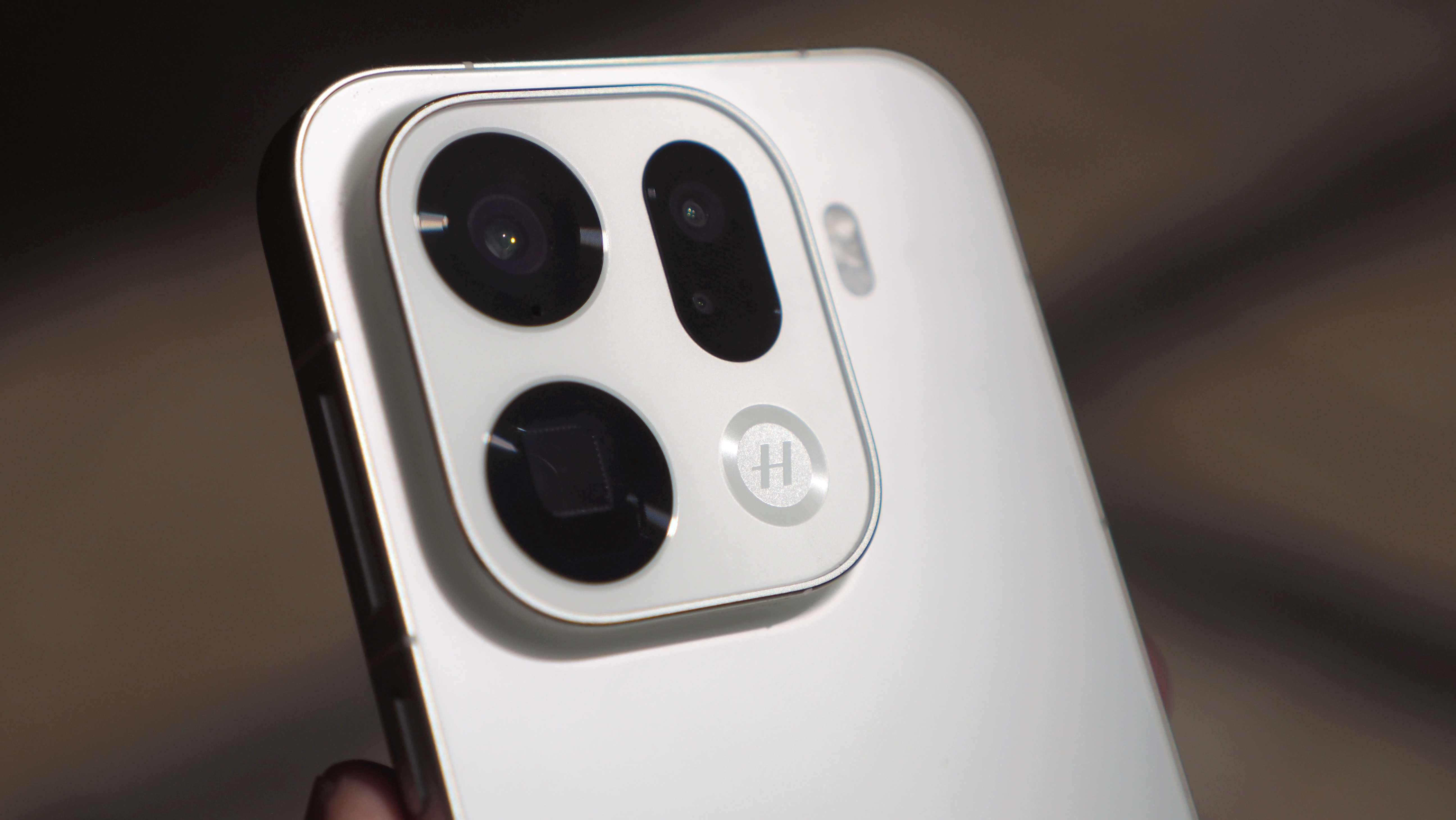
(Image credit: Future / Mike Lowe)
The cameras are often the biggest single reason to entice a phone's purchase – and it's here where Oppo has really gone all-out in delivering a full suite of lenses, larger-than-average sensors, and great tools.
It's also the only brand continuing to work with Hasselblad, after OnePlus ceased its collaboration, adding a further one-up in Oppo's arsenal – the periscope zoom, described as the 'Hasselblad Telephoto', in particular, is hugely impressive.

Low-light shots on the Find X9 Pro (Image credit: Future / Mike Lowe)

(Image credit: Future / Mike Lowe)

(Image credit: Future / Mike Lowe)

(Image credit: Future / Mike Lowe)

(Image credit: Future / Mike Lowe)

(Image credit: Future / Mike Lowe)
Given how long I've been using the Find X9 Pro, I've been able to shoot in all sorts of scenarios – from a personal holiday in Malta, to the official X9 Pro launch event during Dia De Los Muertos in Mexico.
Editing down the hundreds upon hundreds of shots for this review has been really enjoyable, as I've captured so many wonderful scenes in all kinds of lighting conditions. The gallery above, for example, focuses on low-light shots, which the X9 Pro handles superbly with its main and zoom lenses – thanks to optical stabilisation, fast apertures, and large sensors all round.

(Image credit: Future / Mike Lowe)

(Image credit: Future / Mike Lowe)

(Image credit: Future / Mike Lowe)

(Image credit: Future / Mike Lowe)

(Image credit: Future / Mike Lowe)

(Image credit: Future / Mike Lowe)

(Image credit: Future / Mike Lowe)

(Image credit: Future / Mike Lowe)
There's a whole heap of processing going on in the background, though, showing the power of the Lumo Image Engine, paired with that MediaTek chipset.
The main lens is described as 'Ultra HDR', as it can handle significant dynamic range – after snapping an image you can watch in real-time as it offsets over/underexposure with ease, rescuing shots that might otherwise have been out of reach.

Zoom examples on the Find X9 Pro (Image credit: Future / Mike Lowe)

(Image credit: Future / Mike Lowe)

(Image credit: Future / Mike Lowe)
Zoom is a huge part of the Find X9 Pro's camera suite, with the 70mm equivalent also offering multiple in-camera crop options, using that 200-megapixel resolution to its benefit.
In the above gallery, for example, you can see the 2x, 3x and 6x zoom levels – the camera's defaults, but you can push it even further – and the degree of detail retained is so impressive. Again, there's processing afoot here, as the system works its magic and sharpens the final results. Again, you can see this shift in real-time after taking a snap.
That said, as I noted in my Hasselblad Teleconverter piece, when the going gets tough, this AI processing can get a little too extreme. It will try and counter for handshake blur, for example, by almost 'drawing in' details, sometimes with questionable results – especially for people and portraits
Typically I enjoy the enhancement the base AI can deliver, but there are thresholds that even it can exceed. And while the Portrait mode's bokeh soft background effect can be impressive, sometimes it can throw off the focus and result in a soft overall image.

Oppo Find X9 Pro's camera variety (Image credit: Future / Mike Lowe)

(Image credit: Future / Mike Lowe)

(Image credit: Future / Mike Lowe)

(Image credit: Future / Mike Lowe)

(Image credit: Future / Mike Lowe)

(Image credit: Future / Mike Lowe)

(Image credit: Future / Mike Lowe)
Serve the X9 Pro with good lighting and the results are glorious; even in excessive bright sunlight, where overexposure is a potential problem and balance is up for question, the camera does a great job in delivering believable images. Close-up works a treat with zoom, too, as the first image in the gallery assortment above shows (a memorable Maltese treat, that).
The fourth 'camera', the True Color Camera, serves white balance and natural colour very well in this regard. I haven't seen it put a foot wrong, even in challenging conditions – resulting in shots across all lenses that look consistent, as if from one camera, not three different ones. That's an increasingly rare win for a phone camera.
Even the wide-angle, which is of high-resolution, at 50-megapixels, delivers stellar results – as you can see in my selection of gallery images below. This is often a given phone's lens that lacks the same bite as the others, but in the Oppo it feels like a cohesive, useful part of the package.

Oppo Find X9 Pro wide-angle camera samples (Image credit: Future / Mike Lowe)

(Image credit: Future / Mike Lowe)

(Image credit: Future / Mike Lowe)

(Image credit: Future / Mike Lowe)

(Image credit: Future / Mike Lowe)
Overall, aside from some slight AI wobbles, and the otherwise impressive face detection taking preference to excess – I wish there was a toggle to quickly deactivate this to avoid mis-focus in busy scenes – the Oppo Find X9's cameras are truly exceptional.
Seriously, it's a case of 'move over Samsung and Google', as Oppo has the full package here that'll be hard to beat. And with the addition of AI tools, including cloud-based automatic composition adjustments, object eraser and more, it has the computational abilities in addition to its raw power.
Oppo Find X9 Pro review: Verdict
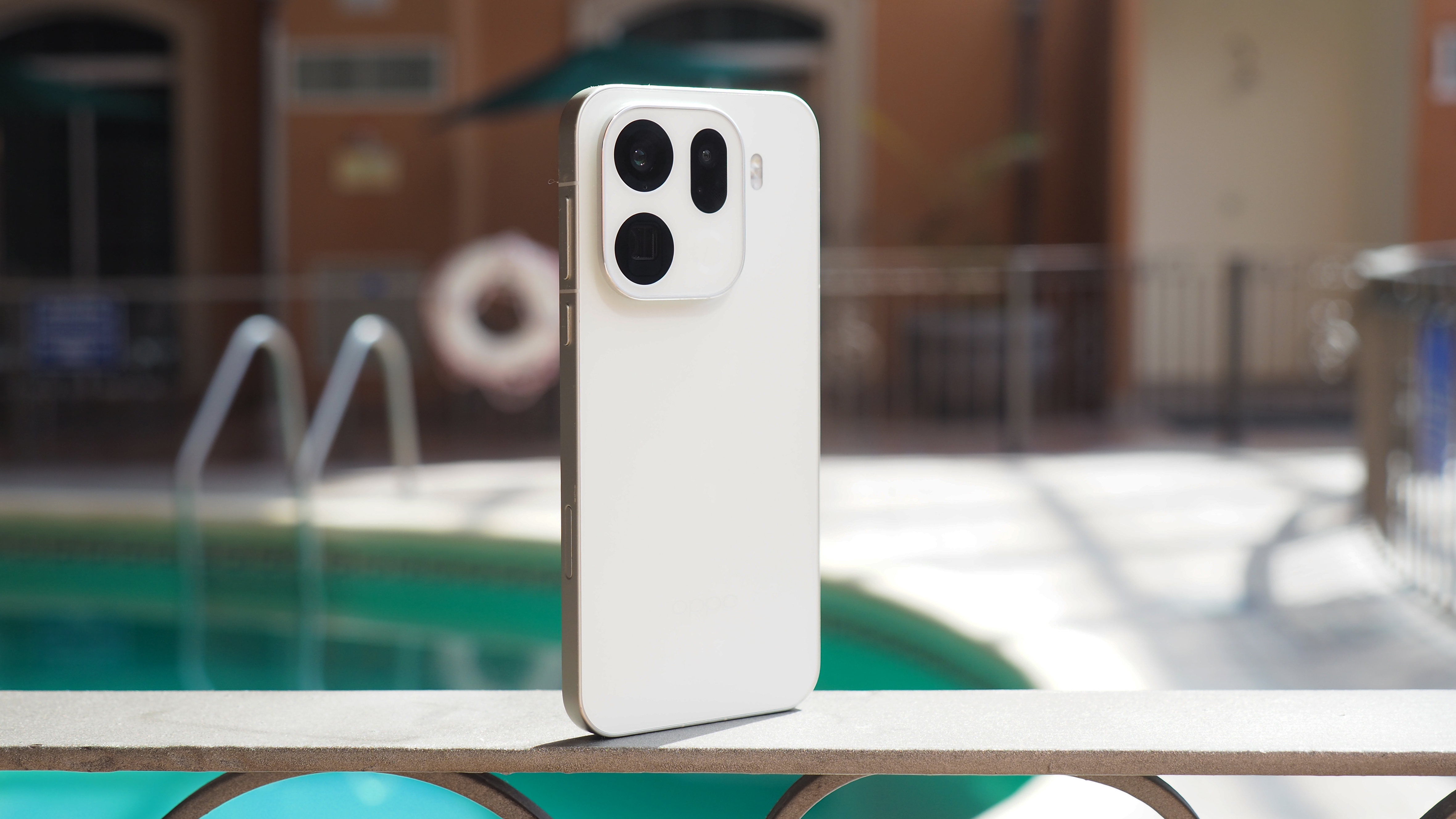
(Image credit: Future / Mike Lowe)
If the one feature you most demand from your phone is top-tier cameras, then look no further than the Oppo Find X9 Pro. Its got the variety yet the consistency – plus the benefit of class raw spec paired with computational AI benefits – to put it out of reach even from Samsung and Google's best.
Not only that, the Find X9 Pro's untouchable battery life sees it last longer than the competition by a good margin. That it's heat management is so well handled in this top-end MediaTek chipset pairing only goes to show off the handset's other talents.
There are some foibles – some more camera controls would be welcome, sometimes over-processing with AI, occasional questionable frame-rates in specific apps, and ColorOS 16 needing some more finesse – but nothing so overbearing that it breaks the experience. That can't be said of many of Oppo's competitors, frankly.
So if you're looking for a new Android flagship, are willing to try something different, and want advances in performance, battery and cameras that even the established brands can't touch, the Oppo Find X9 Pro should be your next phone. It's sensationally shaking up the status quo – and is a triumph.
Also consider
All that said, I still love using the Samsung Galaxy S25 Ultra, which features a built-in S Pen stylus for a whole different user experience. It's a little older than Oppo's latest, and its cameras aren't as up to date to compare any more, but everything it delivers, it delivers well.
Google's latest Pixel 10 Pro and Pixel 10 Pro XL are also viable options, with a super software experience and, while the zoom isn't as impressive overall, the computational photography here is also great to have.

-
 C114 Communication Network
C114 Communication Network -
 Communication Home
Communication Home


